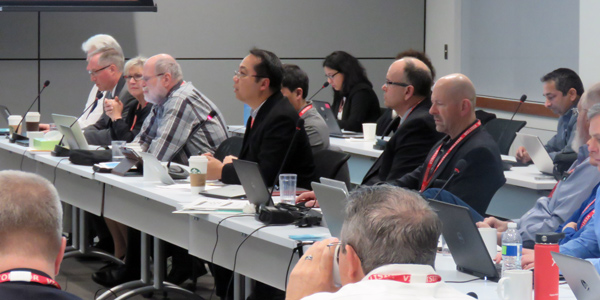By Jason Fordney
FOLSOM, Calif. — CAISO’s latest transmission plan recommends cutting more than $2.7 billion from current transmission spending estimates across the 2027 planning horizon.
The ISO is preparing its 2017-2018 transmission plan for approval by the Board of Governors next month, launching the procurement phase of a process heavily influenced by expanding behind-the-meter solar generation. Board approval kicks off the processes for procuring transmission and determining eligibility for incentive rate cost recovery from FERC by virtue of being part of a state plan.
Speaking at the Western Planning Region Interregional Transmission Coordination Meeting on Feb. 22, CAISO Executive Director of Infrastructure Development Neil Millar said the plan represents about $160 million in capital spending, but there is currently more of an emphasis on project cancellation.
The plan “really did require hitting the reset button and a major re-planning effort for a number of those previously approved projects,” he said. The planning process is “in a pause waiting for state policy guidance on higher levels of renewable penetration.”
In a discussion later, Millar added that “we are trying to fit a bit of a square peg in a round hole” by using the interregional process as a potential way to bring renewables into California, “which is beyond the scope of what the interregional process was designed for.”
As a supplement to its 2016-2017 transmission planning process, CAISO in January issued a study noting that California faces a “severe shortage” of transmission capacity needed to tap potential New Mexico and Wyoming wind resources that would help the state meet its 50% renewable portfolio standard. (See CAISO: Tx Constraints Hinder Out-of-State Wind.)
The ISO’s 2017-2018 reliability analysis led to recommendations for 12 new transmission projects, but it is also recommending cancellation of 19 projects in the Pacific Gas and Electric service territory and rescoping of 21 others, accounting for the more than $2.7 billion in reductions. Six need further review, and two previously approved projects in San Diego Gas & Electric’s territory are recommended for cancellation. CAISO prioritizes regional and local reliability needs first, then state policy, followed by economic analysis, according to an ISO presentation.
“Reliability issues are largely in hand, especially with load forecasts declining from previous years and behind-the-meter generation forecasts increasing from previous projections,” CAISO said.
CAISO works closely with the California Energy Commission, which provides demand forecasts and resource needs assessments for the transmission planning process while the ISO creates a transmission plan. The California Public Utilities Commission oversees procurement, with input provided by the CEC, the ISO, investor-owned utilities and others. Included in the plan is a reliability analysis for NERC compliance, transmission needs for a 33% RPS and other analyses.
The ISO is conducting sequential technical studies that will result in a draft transmission plan and is targeting March approval by the board to initiate procurement. It posted its draft plan on Feb. 1, with stakeholder comments due this week. The 2017-2018 plan was originally introduced in early 2017.
Western transmission developers attending the meeting also provided rundowns of their interregional plans, including Northern Tier Transmission Group, WestConnect, ColumbiaGrid and TransWest.





